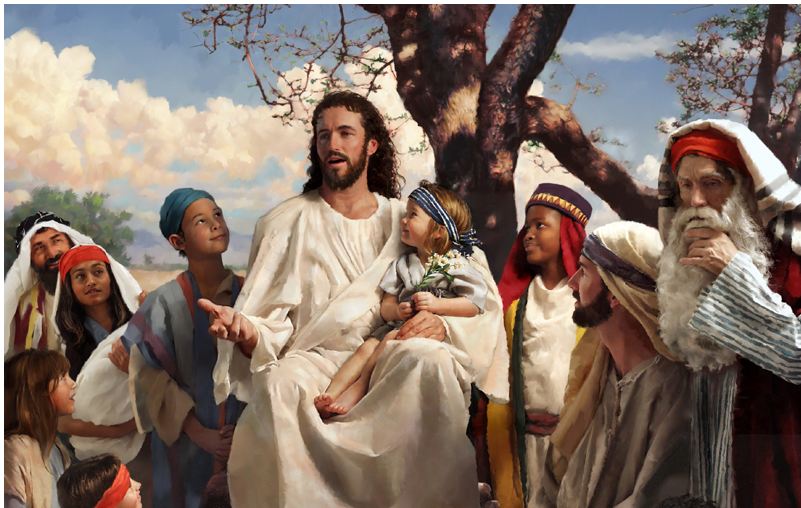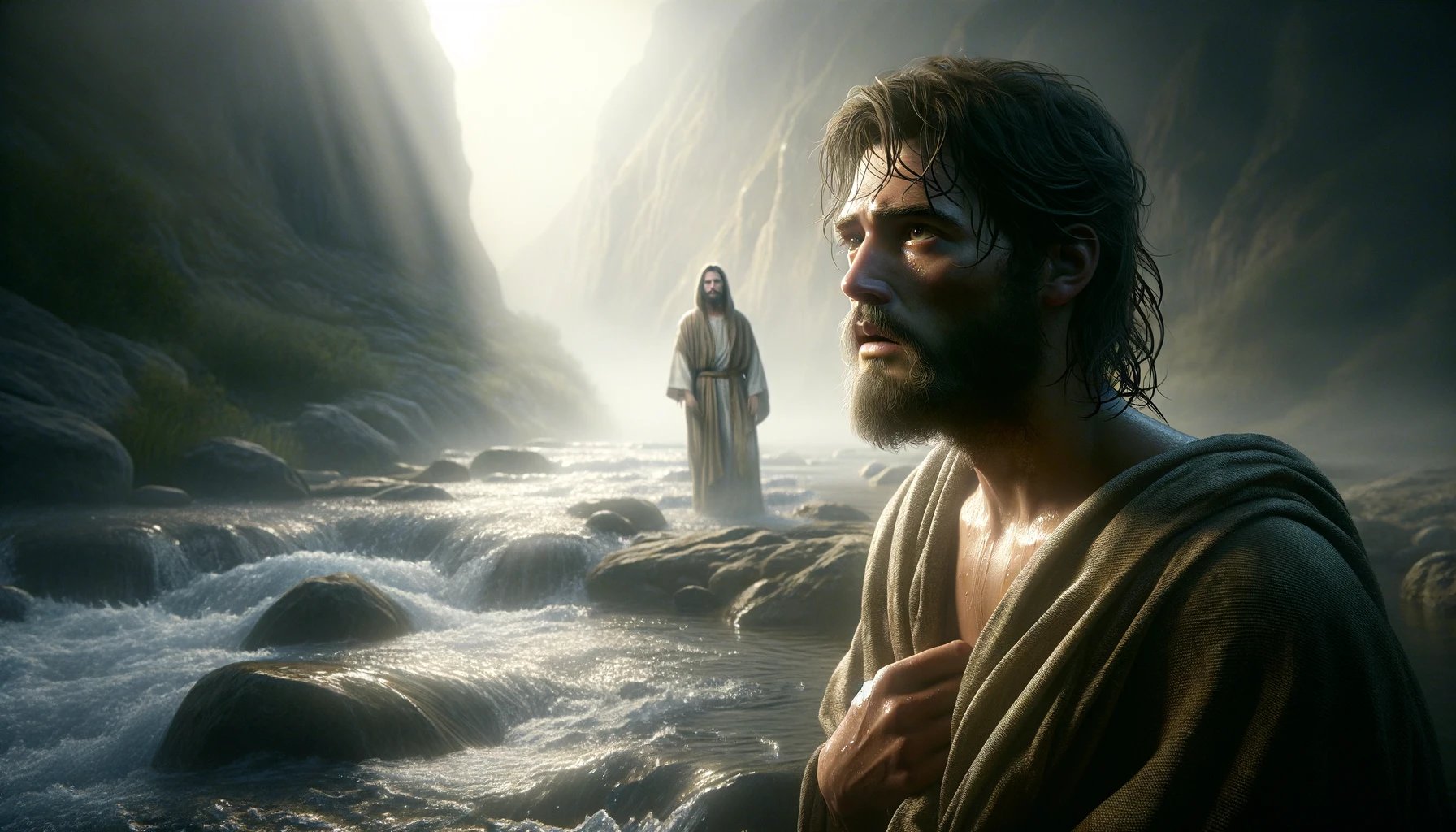Home>Christian Resources>50 Things You Didn’t Know About The New Testament Books


Christian Resources
50 Things You Didn’t Know About The New Testament Books
Modified: January 9, 2024
Ericka Andersen, an editor at Christian.net, expertly merges digital strategy with content creation, focusing on faith and societal issues. Her communication skills enhance the platform's engaging narratives, fostering meaningful dialogue on belief's impact on society.
The New Testament books have some interesting facts that will blow your mind. Discover these facts and have fun while studying the Bible.
(Many of the links in this article redirect to a specific reviewed product. Your purchase of these products through affiliate links helps to generate commission for Christian.net, at no extra cost. Learn more)
We know that the New Testament focuses on Jesus Christ and the fulfillment of the promises from the Old Testament. It has records of his life, death, resurrection, ascension, and the continuation of his work after his ascension. As we read and understand the bible, we find hope, security, and strength in God’s word and promises. But did you know that behind the New Testament books lie many amusing facts? Facts that will certainly spark your interest. Expand your mind and learn more about these interesting facts of the New Testament books here and now!
Facts Behind the Structure of the New Testament

We all know that the Bible has two parts, the Old Testament and the New Testament. The Old Testament consists of 39 books, while there are 27 New Testament books. So, in total, there are 66 books in the Bible.
The books that focus on Jesus’ life, acts, and teachings are in the four Gospels: Matthew, Mark, Luke, and John. These Gospels are known as the first books of the New Testament. After Jesus’ ascension, the acts of Jesus’ disciples in the New Testament books include the historical narrative from when the Christian Church began. The Epistles in the Bible contains advice, instruction, admonition, and exhortation to all Christians. The Book of Revelation, the last book of the Bible, tackles the apocalyptic description of the world’s ending. Aside from this information, here are some facts about the New Testament that you should know.
1. The New Testament was originally written in Greek.
Today, the Bible is available in different languages. However, the New Testament books were originally written in Greek; more specifically, Koine Greek. This form of Greek was the language of the Eastern Mediterranean from the conquests of Alexander the Great (335–323 BC) until the Byzantine Greek Empire (c. 600). The New Testament books were written in Greek because their authors wanted to reach a broad Gentile audience. Instead of writing only in Aramaic or Hebrew, they decided to spread God’s word to more than just the Jews.
2. The New Testament has a total of 260 chapters.
The New Testament has a total of 260 chapters from Matthew to Revelation. Both the Gospel of Matthew and the Book of Acts are the New Testament books with the longest chapters. The shortest New Testament books, however, are 2 John, 3 John, Jude, and Philemon with only one chapter each.
3. The New Testament has 7,957 verses.
When we read our Bible, we try to at least memorize or remember some verses, especially those that inspire our lives. But did you know that the Bible has 31,102 verses? It has been counted that 23,145 verses are from the Old Testament and 7,957 verses are from the New Testament. How many verses can you memorize?
4. The total number of words is roughly 184,600.
They said that the total number of words of the New Testament books is roughly around 184,590. However, it is controversial as it does depend on which translation you use. For example, the King James Version (KJV) has 783,137 words, while the New International Version (NIV) has 727,969 words. Interestingly, according to Jonathan Hammond’s book, ‘The Bible the Only Infallible Book for the Perishing World’, the New Testament has a total of 180,552 words. Meanwhile, the Greek New Testament has 138,162 words.
5. The longest book in the New Testament is the Book of Acts.
The only historical book in the New Testament, the Acts of the Apostles focuses on the life of the Apostles and the early church. It is also known as the Acts of the Holy Spirit through the Apostles. The Book of Acts is said to have been written by the Apostle Luke.
6. The shortest book in the New Testament is 3 John.
3 John is the shortest chapter not only in the New Testament but also in the whole Bible. It only comprises one chapter with fifteen verses. Although you might argue why this ends up as the shortest book and not 2 John, there is a simple answer. It is the second shortest book in the Bible with one chapter too, but with thirteen verses. However, 3 John has 219 words, while 2 John has 245. Therefore, it makes 3 John the shortest New Testament book.
7. The longest chapter in the New Testament is Luke 1.
Though it isn’t the longest book of the New Testament, the Book of Luke has the longest chapter. Luke 1 has 80 verses, which makes it the longest chapter in the New Testament. It describes the events and predictions of what and who is to come, leading up to the birth of Jesus.
8. It is also interesting that the shortest chapter in the New Testament is in Revelation 15.
The shortest chapter in the New Testament Revelation 15 has only eight verses. It is the preface to the final series of judgments that come on the earth during the Great Tribulation.
9. The shortest verse in the Bible is in the New Testament, which is John 11:35.
It is the shortest verse in the Bible because it consists of only two words, ‘Jesus wept’. These two words describe the incredible nature of God and the Ministry of Jesus Christ. This moment speaks to his humanity and his ability to sympathize with our pain and suffering.
10. The word ‘grace’ appears 128 times in the New Testament.
This word appears four times more than it was used in the Old Testament, which is only used 32 times. The coming of Jesus in the New Testament gives a more significant meaning for this word.
11. The New Testament completed the Old Testament.
The New Testament can stand alone, even without the Old Testament, but the latter can’t. It is not complete without the New Testament. It conceived the prophecies which were fulfilled later on in the New Testament, especially about the coming of the Messiah.
12. The New Testament books are not arranged chronologically.
The books are arranged in a more logical narrative order. The Gospels tell the life of Jesus and his teachings. The Book of Acts details the work of Jesus’ followers in propagating the Christian faith. And the Epistles teach about the meaning and implications of faith. Meanwhile, the book of Revelation gives prophecies about future events and the culmination of the divine purpose.
13. The Gospel of John is considered to be a spiritual gospel.
Matthew, Luke, and Mark are known as the synoptic gospels. Meanwhile, the Gospel of John was different from the others. This is because it tells the story of Jesus in symbolic ways instead of in a synopsis.
14. The four gospels were written for different audiences.
The Gospel of Matthew for the Jews, Mark for the Romans, Luke for the Greeks, and John for the growing church. Each author selected some events to target their audience. Hence it explains why some events and the focus differ between the gospels.
15. The New Testament books were written within 50-90 years.
The Bibleapproximately took 1,500 years to be written. Nonetheless, it didn’t fully take thousands of years to complete the Bible. There had been a 400-year gap between when the last book of the Bible, Malachi, to the first book of the New Testament, Matthew. Additionally, even though Matthew is the first book in the New Testament, the Epistle of James is believed to come first in the order of the New Testament. James wrote the book at around 44-49 AD while the Book of Matthew was written around AD 66–73.
16. The Book of James is the ‘bossiest’ book in the New Testament.
The Book of James has the highest concentration of imperatives. It has 108 verses packed with a total of 61 imperatives. Almost 2.6% of the words in James are imperative verbs. By having this many imperatives, it allows us to see that not only does James want believers to hear God’s word, but also act upon it.
17. There are only eight writers for the New Testament books.
While there are 40 accredited writers in the Bible, there are only eight writers who wrote the New Testament books. Matthew, John Mark, Luke, and John, as we know, wrote the four gospels. Luke also wrote the book of Acts. Paul is responsible for the Pauline Letters. Peter and John also took part in writing the New Testament. While James, the brother of Jesus, wrote the Book of James and Jude, the brother of James wrote the Book of Jude. Although ascribed to Apostle Paul, Hebrews is generally considered to have been written anonymously.
18. Jesus fulfilled almost 300 direct and indirect prophecies of the Old Testament in the New Testament.
As we know, the New Testament completed the prophecies of the Old Testament. These prophecies about Jesus went beyond the mathematical probability of coincidence. Examples of these are the place of birth, virgin birth, time of birth, and the exact lineage of Jesus Christ. It also includes events such as the rejection by leaders, mode of death, and bearing the sins of mankind. Additionally, the resurrection and even the establishment of a new covenant was fulfilled.
19. The middle book of the New Testament is 2 Thessalonians.
A Pauline Epistle written by Paul, 2 Thessalonians reemphasizes the coming return of Jesus Christ. It is written to correct any misunderstandings as some people thought Jesus already returned.
20. The middle chapter of the New Testament is Romans 13.
Also written by Paul, this chapter in Romans describes the Christians’ obligations to the authority given to the government.
21. On the other hand, the middle verse is Acts 17:17
“So he reasoned in the synagogue with the Jews and the devout persons, and in the marketplace every day with those who happened to be there.”
It is part of Paul’s encounter in Athens, in which he saw how the city was full of idols. He preached Jesus and resurrection to the people there.
Hidden Facts About Jesus from the New Testament

The center of the New Testament is about the life of Jesus. We have all sinned and have fallen short of the glory of God. But because of His great love, He gave His one and only begotten son, Jesus Christ, for our salvation. Jesus lived a sinless life, suffered, and died on the cross to fully pay the price of our sins. He was then buried in a tomb, resurrecting again after three days. And through him, we have received salvation and eternal life. Aside from this truth, we also know basic facts about him and the kind of life he led. However, there are trivial things about Jesus in the New Testament books you probably didn’t notice. Here are some unpopular facts that will make you reread your Bible once again.
22. Jesus’ genealogy differs in Matthew and Luke.
Matthew gives Joseph’s genealogy in line with his Jewish audience’s focus on the patriarchal lineage. On the other hand, Luke gives Mary’s genealogy consistent with his Greek audience’s focus on biological lineage.
23. He may not have been born in 1 A.D.
His birth happened between Augustus Caesar’s census decree mentioned in Luke 2, and Herod leaving Jerusalem for Jericho. These two events were between 8 B.C. and 5 B.C. So, if these dates were when Jesus had lived, his birth could not have nee during 1AD.
24. Jesus got his name from an angel.
In Luke 1:31, after the angel said that Mary will conceive and give birth to a son, and specifically told Mary and Joseph that they will name the child Jesus.
25. However, the name Jesus was common during the first century.
It is amazing to know that while Jesus was on earth, he didn’t chase after power or popularity. If one looks carefully, they can see this through demonstration in the name he chose. But, behind that common name is a truth, it means “Yahweh saves”.
26. Jesus’ actual name was Joshua or pronounced as Yeshua.
Since the dominant lingua franca during the 1st century was Greek, it was the language used for the New Testament books. It didn’t have the Hebrew soft “J” sound in Joshua, but only the hard-J sound. Also, it doesn’t have the Hebrew uvular H of Joshua. Hence, Joshua became Jesus in the Greek language.
27. Jesus’ last name isn’t Christ.
Some people thought that Christ is Jesus’ surname, however, it isn’t. During the first century, the people didn’t have last names. They were identified by referencing their parents. An example of this is from John 6:42, where Jesus was identified as the son of Joseph. Meanwhile, the word Christ came from the Greek word Christos, which means ‘the anointed one’.
28. The Bible doesn’t mention how many magi or wise men visited Jesus.
We grow up in a belief that three magi or wise men visited Jesus because of the three gifts they brought. The gifts mentioned were gold, frankincense, and myrrh. However, it didn’t mention how many Magi exactly traveled from the east to visit the newborn king.
29. The wise men visited Jesus not exactly at his birth.
Contrary to what we believe, the wise men or magi visited Jesus when he was one or two years old. Matthew 2:11 states that the magi went to Mary and Joseph’s house, meaning they had already been married. So, it was a while after Jesus was born when the magi found him.
30. Jesus had several half-siblings.
The gospel tells us that Jesus had at least four brothers, mentioned in Matthew 12:36, Luke 8:19, Mark 3:31. The names of Jesus’ half-brothers can be found in the Book of Matthew. Also, in Matthew 13:55-56, we can find that Jesus also has at least two unnamed half-sisters.
31. He was likely very ordinary looking.
The Bible didn’t give enough information about the physical appearance of Jesus. But Isaiah 53:2 gives us a prophecy about his coming. Also in Matthew 26:48, when Judas betrayed Jesus, he had to kiss him to help the authorities identify him. This shows that Jesus didn’t physically stand out among other disciples. Another instance from John 20:14-15, Mary Magdalene, mistakes him as a gardener after he rose from the dead.
32. Jesus’ first miracle was in Cana.
The first miracle Jesus performed was when he turned water into wine at the wedding feast in Cana. Found in John 2:1-11, Jesus demonstrated his miraculous powers given by God over physical elements.
33. He refers to God as “Father” in his prayers.
All Jesus’ prayers demonstrate his deep and abiding relationship with God. The New Testament books show that when Jesus spoke to God, he used the word Abba, which means father.
34. The New Testament books tell us that Jesus raised three people from the dead.
Raising people from the dead was one of the most striking miracles Jesus did during his ministry. Though many recall two stories of Jesus raising people from the dead, he actually performed this miracle to three people. The first resurrection was the son of a widow in Nain (Luke 7:11-17). The second was Jairus’ daughter (Luke 8:52-56), and third was Lazarus (John 11).
35. Only one miracle is recorded in all four Gospels.
There are more than 40 miracles recorded in the gospels. While most of them occur in over one account, there’s only one miraculous event that can be found in all four gospels. It is the feeding of the 5,000, which can be found in Matthew 14:13-21, Mark 6:31-44, Luke 9:12-17, and John 6:1-14.
Interesting Facts About the Authors of the Four Gospels

There are many hidden facts inside the New Testament books that have caught our interests and have amused us over the years. Yet, it is good to know some facts about the authors behind these books. Each gospel covers almost the same experiences but in different perspectives for their target audiences. Some recount their memories, while others don’t. The accounts in each gospel were written in a specific context for a specific purpose. To help you know the four authors of the gospels better, here are some facts you can learn about them.
36. The Gospel of Matthew contains more than 130 Old Testament quotes and allusions.
Matthew highlights how Jesus’ ministry was prophesied in the Old Testament. The Jews pieced together their own picture of what the Messiah would be like and how he would save Israel. These allusions helped Matthew’s Jewish audience to acknowledge Jesus as the one they were waiting for.
37. Matthew’s gospel is the only one that mentions the magi at Jesus’ birth.
Among the four gospels, the visit of the wise men was only mentioned in the Gospel of Matthew.
38. Luke is the only Gentile among the authors of the Gospel.
Luke wrote both the Gospel of Luke and Book of Acts to share the story of Jesus Christ and the rise of the church with Theophilus. Most of the theories about his identity was a high-ranking or a prominent Gentile. This made Luke the only gospel written by a Gentile for a Gentile audience.
39. Luke was a physician.
In Colossians 4:14, Paul called Luke a physician. Aside from that, we can evidently see Luke’s profession based on the medical language he used.
Acts 28:8 “It happened that the father of Publius lay sick with fever and dysentery. And Paul visited him and prayed, and putting his hands on him, healed him.”
The Greek words Luke used for ‘suffering from fever and dysentery’ or ‘puretois kai dusenterio sunechomenon’ is correct medical terminology. It can be found in the work of Hippocrates. It is the same with the encounter with a man with dropsy in Luke 14. He used the word hudropikos, which can be found in Hippocratic writings.
40. The Gospel of Luke features unique and well-known parables.
Jesus used multiple parables in his teachings, which were recorded in the Gospels. However, the Gospel of Luke is particularly packed with interesting and distinct parables. This includes the parable of the prodigal son (Luke 15:11-32) and the good Samaritan (Luke 10:29-37). Other parables are only limited to Luke’s Gospel.
41. Mark’s Gospel is the shortest among the four gospels.
Mark is significantly shorter than the other gospels based on the original word count. It only has 11,304 words compared to John, the second shortest, which has 15,634 words. Yet, the gospel is packed with much detail. Compared to Luke, the longest gospel, Mark offers considerably more detail such as giving the specific words of Jesus.
42. Mark’s Gospel is also action-packed.
Mark focuses on Jesus Christ’s actions more than the dialogue. He also gives attention to the terms of power and authority.
43. John’s Gospel focuses on Jesus’ dialogues.
Jesus often taught people through various sermons and parables. To help us understand Jesus’ teachings and his parables, the Gospel of John gives us more insight into Jesus’ conversations.
44. John focuses on more theology than history.
From the start of John’s gospel, he focuses on the implications of who Jesus was and what he did, unlike the other gospels that focuses more on Jesus’ life and miracles.
Other Interesting Facts about the New Testament Books

Sometimes, we fail to comprehend, or we tend to overlook facts in the New Testament books. In the past, we didn’t know this information would help us understand the context of Jesus’ teachings in-depth. Today, as Christians, it is also good to have an idea about the origin of the New Testament or other information that will spark our curious minds. Here are some facts that you can add to your collection of Bible facts.
45. High death rates contributed to Jesus’ popularity as a healer.
Dr. Craig Evans, an expert in the background of the New Testament, examined the evidence of ossuaries from the first century. He noted that often about half of the skeletons found are from adults. It indicates that close to half of the population did not live past their teens. It explains why huge crowds gathered around Jesus. Since people during that time we need great healing, Jesus gained a reputation as a successful healer.
46. The Gospel of Luke as the basis for the Jesus film.
Among all the New Testament books, the popular 1979 film Jesus used the Gospel of Luke as the basis. The movie premiered in 250 US theaters. Later on, it was translated into more than 1,700 languages and shown all over the world. This leads to more than 572 million of people accepting Jesus Christ in their lives.
47. William Tyndale produced the first printed edition of the New Testament in English.
48. Some New Testament epistles were written from the cities in Europe.
49. Part of John’s gospel contains the oldest known fragment from the New Testament.
New Testament books were preserved until the invention of printing as handwritten copies. The oldest manuscripts containing the whole New Testament are from the 4th century. A copy of a passage from John’s gospel is the oldest known fragment from the New Testament.
50. The Gospel of Thomas
The Gospel of Thomas is a collection of sayings by Jesus. It was excluded from the New Testament for one reason; being one of the so-called apocryphal gospels. According to the Church fathers, the mainline of the church rejecting the gospel was because it was considered heretical.
Unraveling Mysteries of the New Testament Books

These facts are probably a handful of the thousand mysteries that lie behind the New Testament books. As we learn and are encouraged to study the Bible each day, we can also encounter different biblical terms that will guide us to understand God’s word better.
And as Christians, the Bible is God’s instrument for us to know God more and to strengthen our faith. It is God’s love letter to us that contains His word and promises to us. Aside from hearing from God, we also get to unfold various stories from various people who lived in different eras. We learn about their culture, history, and how God worked in their lives. Behind the words from these accounts, there most likely are more in-depth mysteries that are currently waiting for us to unfold. God’s word helps us build our faith and deepen our personal relationship with Him. As we discover more mysteries from the Bible, may it continue to light up the spiritual fire in our hearts and hold on to his word every now and then.















